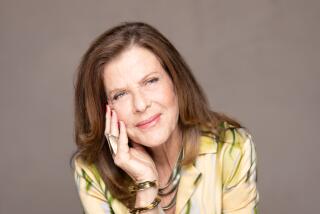How the late Mark Singer fought traditionalists to transform Laguna Beach architecture
Laguna Beach architect Mark Singer, whose dramatic use of concrete, rock, glass and exposed steel marked a sharp contrast from the traditional wood cottages in the beach community, has died. He was 67.
The cause was pancreatic cancer that he had been battling for about a year-and-a-half, said his daughter, Jessica Berman.
Singer, who died Sept. 17 at his home in Laguna Beach, designed scores of homes beginning in the late 1980s, becoming so identified with Contemporary architecture in the area that modern works by others were often attributed to him.
“Every time people see a building with sharp corners,” he said in a 1998 Times interview, “it’s a Mark Singer building.”
It was not always meant as a compliment. Although Singer won numerous architectural awards for his designs, his buildings roiled traditionalists who wanted to preserve the bohemian nature of the beach city.
“He transformed the architecture of Laguna Beach,” said Marshall Ininns, a local architect who admires Singer’s work, “from pitched roofs with shake wood shingles, wood siding and brick trim, to glass walls and use of materials like stone and stucco.”
Singer’s homes, which sometimes went for seven-figure price tags, favored spacious rooms with little ornamentation. With his ample use of glass, often the most eye-catching feature was the view of outside.
“Simplicity always celebrates the surprises of nature,” he said in a 2005 Orange County Register interview. “In a simple space, sunlight has a place to play without conflict. The sun, wind and rain can all perform their magic.”
If he used woods in a design, they were often highly polished, exotic woods. And on some projects he added exterior water features, including a 12-foot tall waterfall on a Laguna Beach house that splashed down thin chains to control the flow.
“There’s nothing more enthralling than the sound of a stream,” he said in a 2007 Times interview.
Singer was born July 31, 1948 in New York, the son and grandson of carpenters. In 1957 his family moved to Baldwin Park in Los Angeles where he and his friends sometimes played on construction sites. In a local library, he came across a book about Frank Lloyd Wright and was enthralled.
But at Cal State Los Angeles, he earned a degree in engineering and went to work for Orange County developer E.O. Rodeffer. Singer went on to get his contracting license, and then finally took the state architecture exam.
From early on in his architecture career, he was often at odds with authorities and design committees. One of his most controversial projects was a mid-1990s remodel of a quaint downtown market that was being transformed into a restaurant. Numerous local groups weighed in on the project, including the Planning Commission, design review board, Heritage Committee and City Council.
Proposed changes to the exterior were hotly debated. In a 1998 Times interview, an irked Singer described his detractors’ attitude as, “Anything old is great, anything new is not so.”
The design was finally cleared and the restaurant opened. Opposition to modern structures eased during the decade, in part because of the numerous new homes built in the wake of a horrific 1993 firestorm that destroyed hundreds of Laguna Beach residences.
When he did face opposition, Singer took solace in his hobby — designing and making furniture.
“Here there is no control board,” he told The Times in 1998 during a tour of his home workshop. “You design something and you can actually see it completed.”
In addition to Berman, Singer is survived his son Ryan, sister Flori Turchin and four grandchildren.
More to Read
Sign up for Essential California
The most important California stories and recommendations in your inbox every morning.
You may occasionally receive promotional content from the Los Angeles Times.











